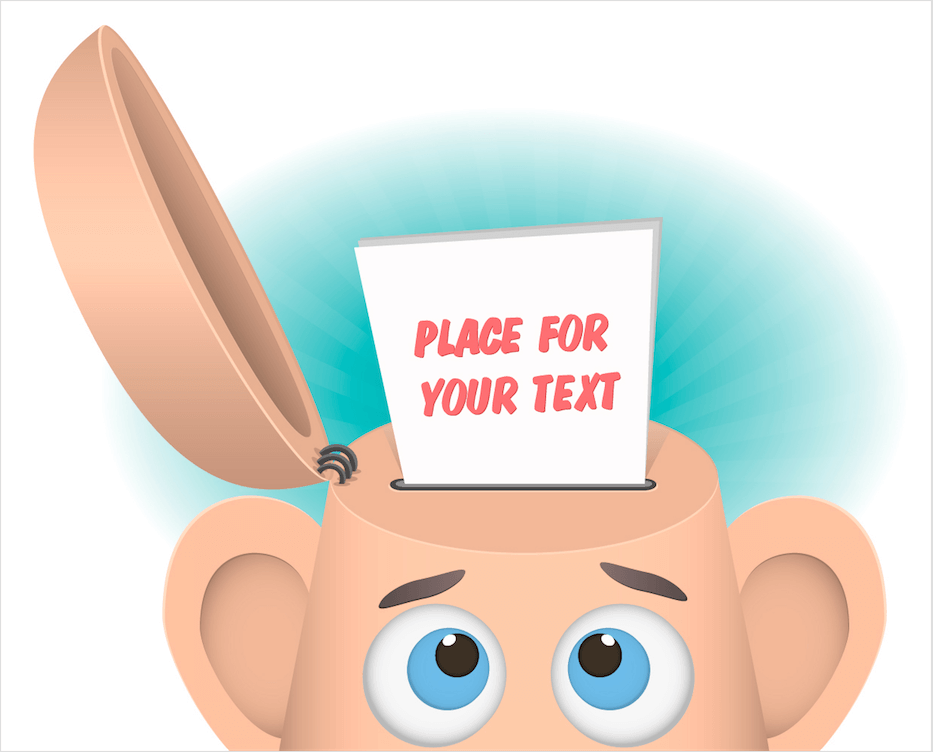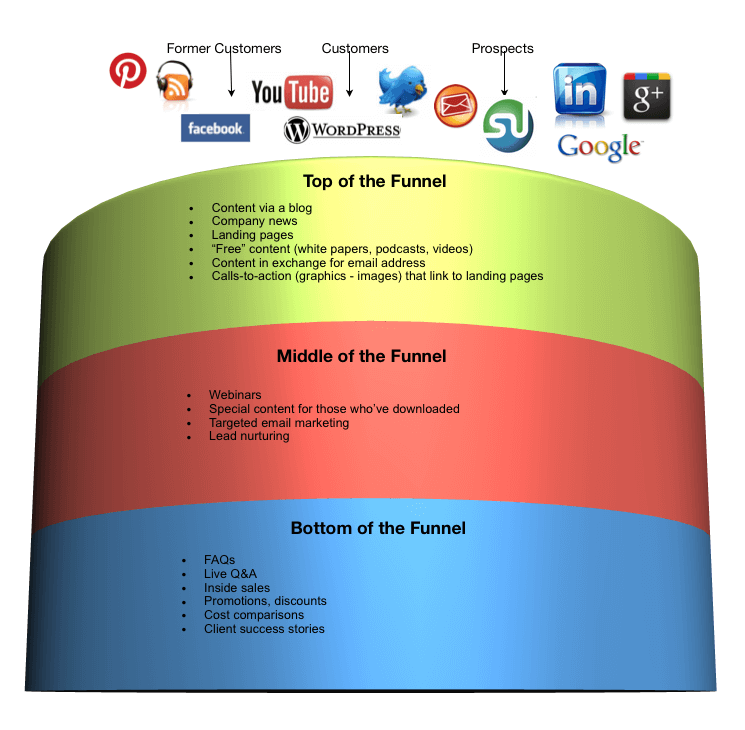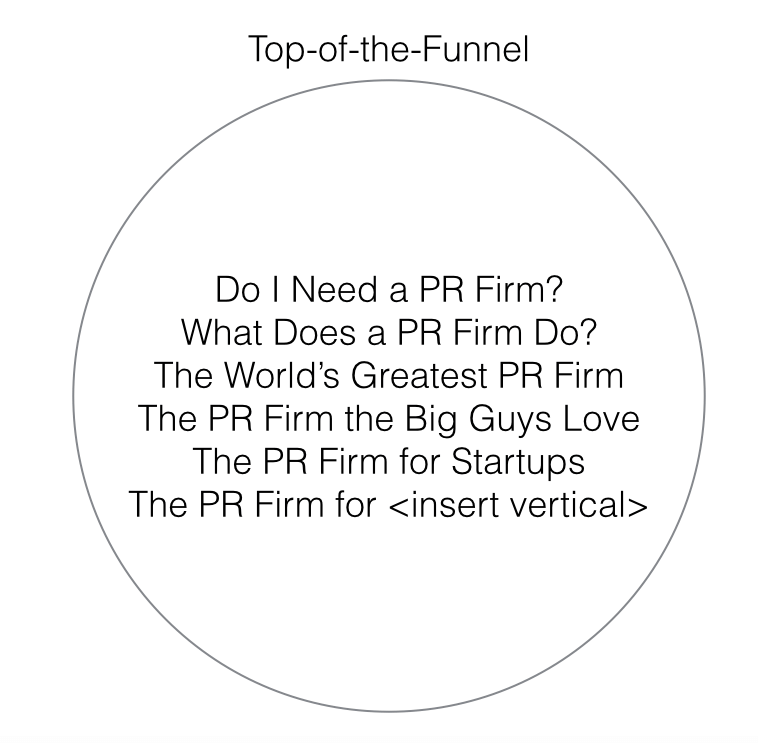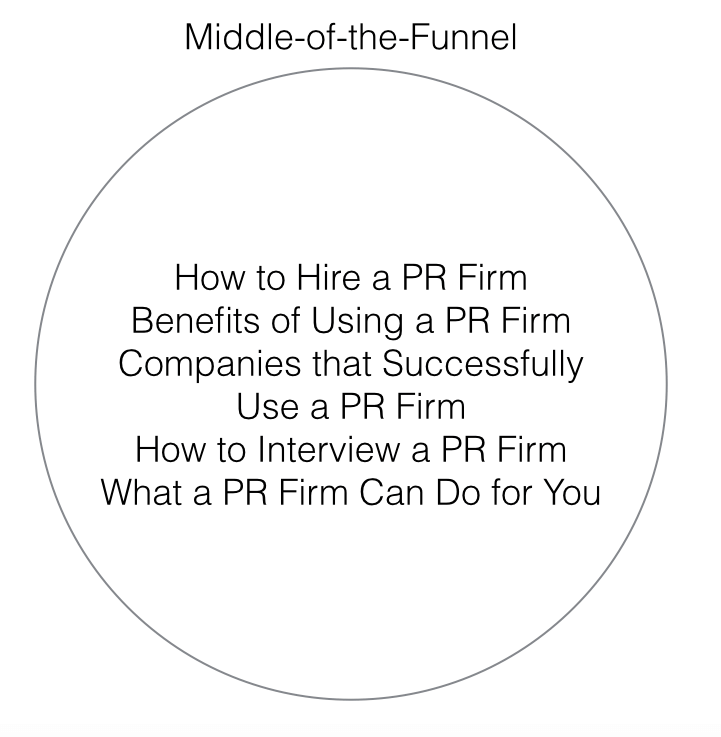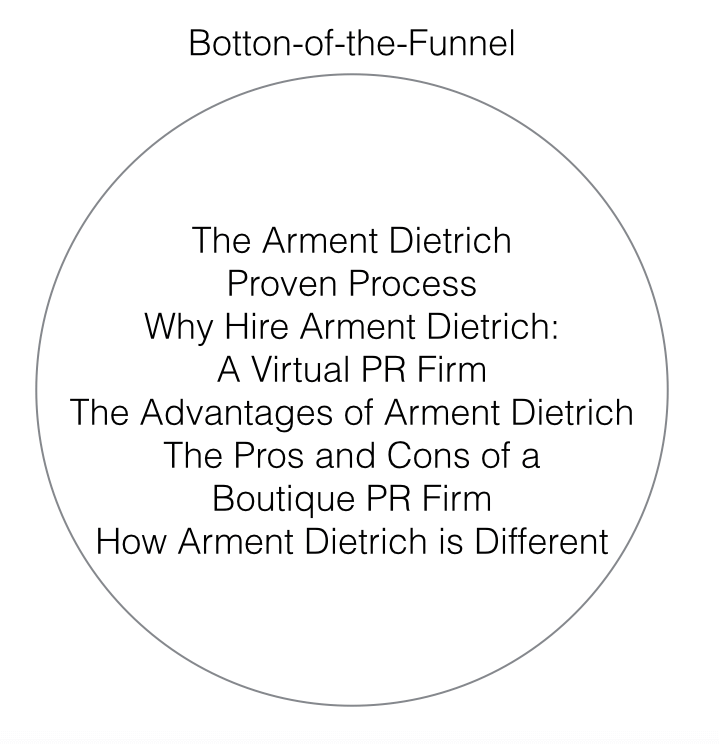Do you plan your content?
As you know, we have a theme here every month (this month is planning!), but until earlier this year, we weren’t very intentional with our editorial calendar.
And, even with the theme, I don’t do so hot with staying on topic when I write (which is five times a week so I figure I get a break!).
But I have a big goal to be much more intentional in the coming year. This doesn’t mean that the content will become robotic.
Rather, I’ll follow a series all the way through—or write long form content to really dig into a topic. I’ll also pursue content hubs, which we require of our clients, but don’t practice ourselves.
To prepare for all of this, I’ve started to plan what I’ll write about (and Lindsay Bell will be grateful because I won’t ping her at 5:11 p.m. and say, “What should I write about tomorrow?”) and have followed the marketing funnel to do so.
The Marketing Funnel
In the marketing funnel, there is a lot of content you can create for each step in the buying decision. It’s broken down by top, middle, and bottom. It’s an easy way to plan your content.
At the very top, of course, is how people find out about you: The social networks, blogging, search engine optimization, email marketing, and other types of content you might produce.
Once they land on your site, you should have a content plan to take them from “kicking the tires” to “I cannot wait to hire these guys!”
That plan should include:
- The very broad content at the top that helps a prospect become educated about an issue, challenge, or solution. For instance, “What does a PR firm do?”
- The discovery content is in the middle and this is where a prospect begins to trust you. You’ve answered the question they have in a way that makes them feel like they trust you. Now they want to know how they might successfully hire a PR firm.
- The consideration content is at the bottom. They are ready to buy…and have likely narrowed down their choices to you and one or two other organizations. This is where you can begin to talk about yourself, but not from your point-of-view. You have to do it from their perspective, which is why case studies and testimonials are so powerful here.
At the top, you’re giving content away. In the middle, you have some free and some behind a landing page so you can begin to collect email addresses. The bottom answers questions such as what it’s like to work with you and how much you cost.
Plan Your Content
As you plan your content, you want to think about your goals and your audiences.
- The top (or broad content) goals should simply be to build industry awareness, attract links, and reach new audiences.
- The middle (or discovery content) goals should be to create awareness of a solution you have to an industry problem, awareness of your organizations, and help prospects to remember you.
- The bottom (or consideration content) goals should be to build product awareness and convert prospects to customers.
Now it’s time to figure out your specific topics.
For purposes of this exercise, let’s stay with how one might hire and work with a PR firm as the topic.
See how this content is very broad?
The only keyword I’ve used is “PR firm,” but I’ve created six different pieces of content using it that a prospect might search to figure out if they need to hire a PR firm.
Pretty much anyone interested in what a PR firm does, or in hiring a PR firm, will land on this content. They may or not be a good lead for us, but this allows us to capture their attention and lead them to the discovery phase.
This gets a bit more in-depth. Now we’re answering questions for informational searches.
The content starts to give the visitor information on what to do next—what to expect, what kinds of questions to ask, and who already uses a PR firm successfully. It also begins to qualify a lead and bring only the best prospects to you and/or your sales team.
At the bottom—when people are getting ready to make a decision—you can provide content that shows your key differentiators, your process, and your positioning statement.
I’ve even included here why you’d want to work with a boutique or a virtual PR firm.
The point is this is where it’s time to talk about what makes you different. Everything to this point has been demonstrating the way you think and building trust through a computer screen.
Now you can plan your content to provide the best information about your organization, and your products or services.
Do a Test Run
To plan your content, you should do a test run right this very second.
Seriously, stop reading and pull out a notebook or open Keynote or PowerPoint.
Draw three circles. Label them just as I have above: Top-of-the-funnel, middle, and bottom.
Then re-read the content goals for each phase above.
Now, choose a topic. Any topic, but make it one that prospects are always curious about when you finally speak to them.
It could be pricing or delivery or warranty or just education about your industry.
Pull out your phone and set a timer for two minutes. Then fill in as many broad topics as you can in the first circle.
When the timer goes off, reset it and do the same for your middle-of-the-funnel circle. Just write headlines around your topic.
Then do it for the third circle.
It may not be exactly as you want, but in the last 10 minutes, you likely created 15-20 different pieces of content you can create around one topic.
This is how you plan your content, and become very intentional, without it seeming like you’re a robot and don’t have personality.
Give it a try!
image credits: The main image is courtesy of Shutterstock. I created the others with Numbers and Keynote.
